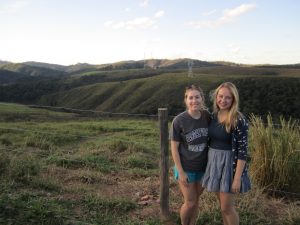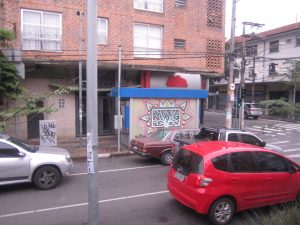
So how does this all relate?
It has been almost five months since arriving home from Brazil. My trip was an adventure and even challenging at times but the opportunities and rewards of traveling abroad with such an incredible group of students is still what triumphs. I am glad I chose Brazil as my destination even to this day because of how prominent the country is in international discussion and because of its uniqueness in culture and landscape.
Through study abroad, I was able to see sustainability, water/food security and human rights come to life in the visits we did every day and the people we met. I also learned so much about the integration of sustainability into a variety of different walks of life including governance, transportation, resource extraction, waste management and food security. It’s difficult to compare all of Brazil to all of the U.S because of the diversity in the cities that belong in each country. If I had any say in it, every city would adopt Curitiba’s integrated and holistic perspective on what sustainability in a cityscape can achieve for the health of the environment and the people in it. The city was so distinctive in its practices that it almost seemed fictional.

After leaving Brazil I have been investigating more about where the products I consume come from. For instance, much of the food we buy is not locally grown and can come from halfway across the world. Who grew it and what kind of fertilizers did they use on it? What was the landscape like before it was transformed into farmland? I think my curiosity has grown directly as a result of my experience in Brazil. This is because as we were traveling through the Amazon and were able to see with our own eyes the burning of parts of the forest, along with the life it supported, as a result of large scale agriculture. I’ve realized that responsible sourcing is not widespread and the destruction is largely out of sight of the consumer. In America I think we are sometimes blind to the international issues that each of us may have an indirect influence on.

In my Energy and Materials class we discussed Sao Paulo’s use of Biodiesel Ethanol made from sugar cane in the majority of the cars. Even though biodiesel doesn’t have as large as a carbon footprint as traditional petroleum sources, Sao Paulo faces severe air pollution as a byproduct of the burning of ethanol. I remember seeing ethanol at all of the gas stations in Sao Paulo and wishing we’d adopted Biodiesel in the U.S. like Brazil has. I was surprised to find out there was a negative consequence to the switch of fuel and realized that all tradeoffs need to be considered before determining something sustainable. Although we didn’t focus on energy use during my trip there, by being able to travel to Sao Paulo I was, one, immediately interested in the problem and two, able to understand the scale of the problem based on the sheer size of the city and the traffic that we experienced there every day.
I would be lucky to come across such an amazing opportunity as I did in Brazil. Out of all my endeavors at ASU my study aboard experience is one that I will never forget. I believe my experience will continue to be applicable in any sustainability related field.

